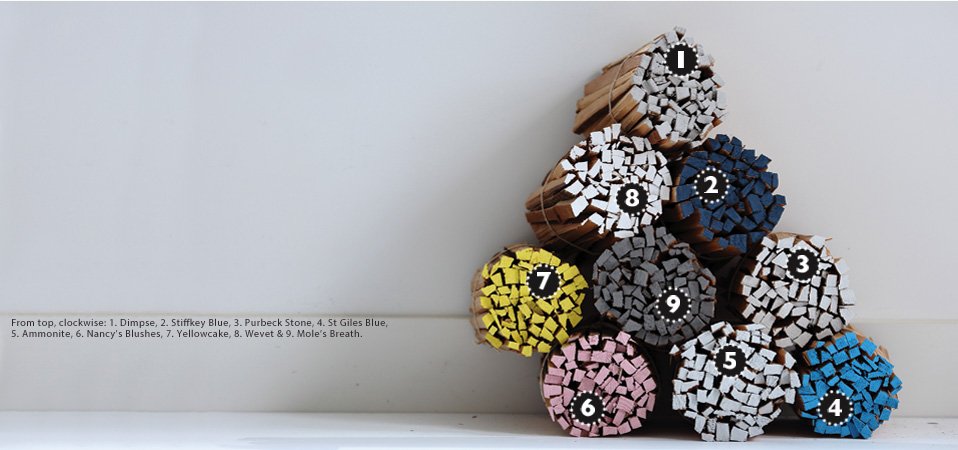Welcome to December's post. We're feeling thoroughly excited with our Christmas-inspired craft this month. By spending just a few pounds on some simple supplies, you can create an incredible centrepiece.
You will need:
Terracotta Pots
First of all, paint your terracotta pots. You only need a very small amount of paint for each so this is a perfect way of experimenting with different sample pots.
We used Little Greene Grey Moss and Sanderson Emerald on one and Little Greene Limestone and Furrow on the other.
Take your time choosing these colours, as flashes of brightness give the gilding a slightly different appearance to softer neutrals.
Make sure you wiggle the paintbrush into all the gaps.
Step two is to apply your size, which is a type of glue that is designed to stay tacky, even when 'dry', a bit like the back of a Post-It note, only stickier. Using a brush, paint the size wherever you want your gilded finish.
Then comes the magical transformation! You need only wait until the size becomes transparent, which can take as little as fifteen minutes. Here it is half-way through the drying process:
Carefully take one sheet of transfer leaf at a time and press it on, gilded-side down, onto your pot.
Using your finger, or a paint brush, press evenly over the back of the paper.
Firmly press the gilding paper into all the nooks and crannies. This will ensure that the leaf adheres to the painted surface. Carefully peel back and admire your handiwork!
Repeat this process everywhere that the size was applied. You may need to work over some areas several times to allow full coverage. Once the pot is covered to your satisfaction, rub your finger, or a clean paintbrush, gently but evenly, over the gilded surface to help detach any loose bits of leaf.
Gilded surfaces need sealing so we used Liberon's Fine Paste Wax in Clear to give a long-lasting finish..

Enjoy experimenting with different finishes for some truly stunning results. Relics of Witney sells Variegated leaf in different finishes, as well as brass, copper and gold. Contact us for more information.
On one of our pots, we applied variegated leaf solely to the inside surface, and on the other we created the reverse effect. It's worth paying extra attention to the edges for a more professional finish.
Merry Christmas from all of us here at Relics of Witney!

























































